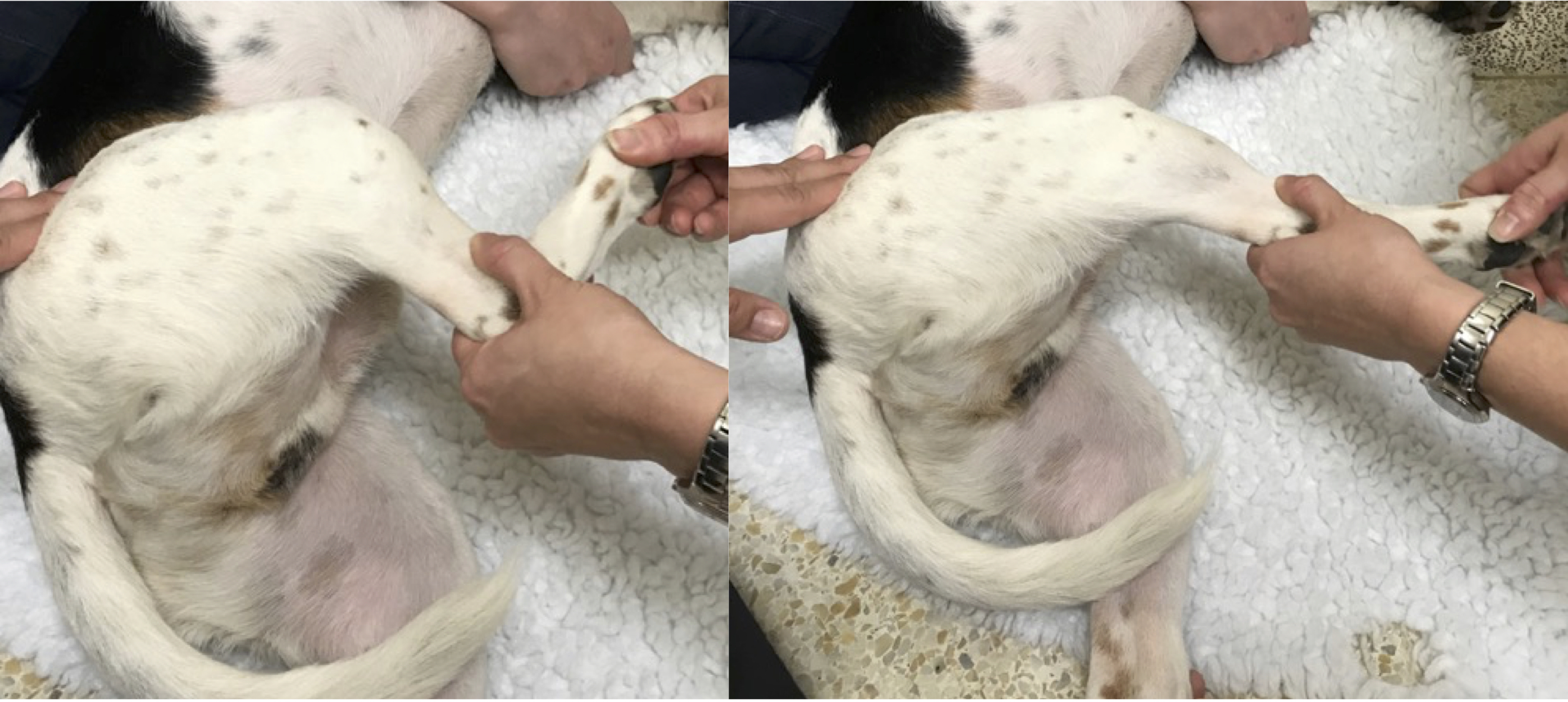General Orthopaedic Examination
Gait & Stance
Watch the animal stand and look for symmetry between the two forelimbs, then the two hindlimbs– is one paw bigger than the other (indicates that more weight is put on that side to relieve the opposite, painful, side)? Is the animal standing normally on all 4 limbs/paws?
Then, watch the animal walk and at a trot. Observe the normal gait in this course, so that you can compare to abnormal in the clinic. Note the following signs of lameness:
- Forelimb lameness: there is asymmetry in the swing or stride between the two forelimbs, during ambulation the head goes up during ambulation when the affected limb contacts the ground.
- Hindlimb lameness: the head is lowered and the weight shifts to the forelimbs when there is hindlimb lameness. The stride shortens and the pelvis swings from side-to-side when ambulating.
Limb Evaluation
Palpate the limbs for symmetry when standing.
Position the animal in lateral recumbency. On the “up” limbs, palpate the limbs and then isolate each joint. Extend and flex the joint to determine its range of motion. In this lab, start to get a sense for normal range of motion of each joint. You can compare range of motion to the other limb (presuming that the other limb is normal) to detect abnormalities. Palpate each joint for signs of pain, joint effusion, and joint crepitus. Repeat on other side.

Joints to isolate in VETM 3430:
- Forelimb: shoulder, elbow, carpus, digits;
- Hindlimb: hip, stifle, tarsus, digits
- Note: when isolating a joint for palpation – do not be pressing on the other joints. Hold the long bones on either side of that specific joint so that you have a true sense of joint pain (or lack of pain) from the joint you are testing.

